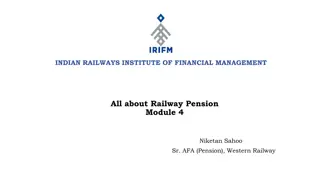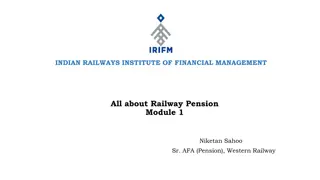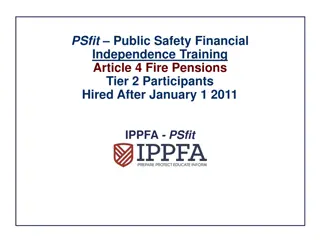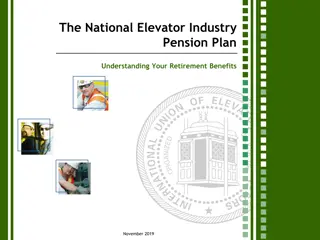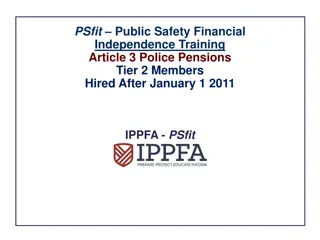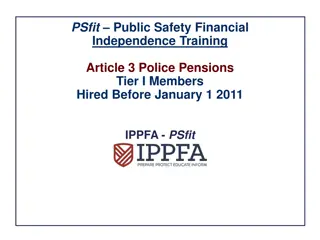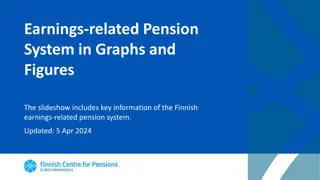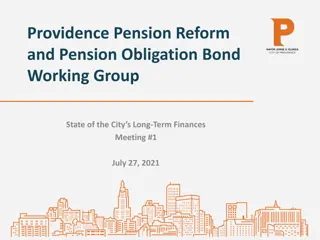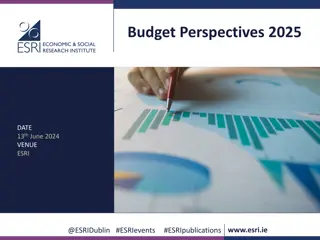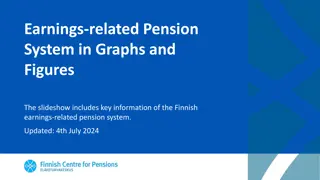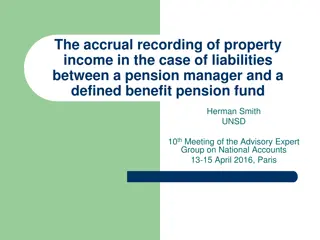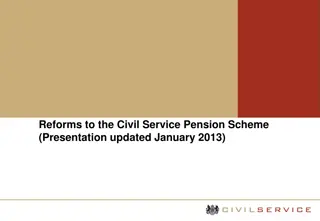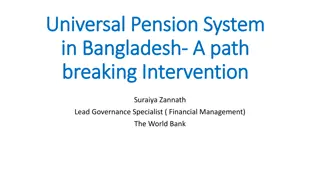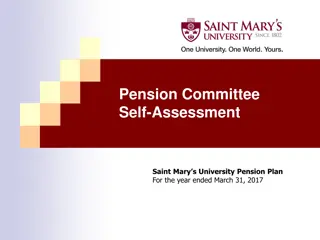Risk-Based Funding Policy Overview for Public Pension Strategies
Risk-Based Funding Policy entails innovative strategies for public pensions, focusing on Contribution Surplus Accounts, Cost and Amortization Methods, Asset Management, and Risk Adjustment. It involves a detailed process including risk matrix analysis, investment policies, and plan design considerations for optimizing funding and liability management.
Download Presentation

Please find below an Image/Link to download the presentation.
The content on the website is provided AS IS for your information and personal use only. It may not be sold, licensed, or shared on other websites without obtaining consent from the author.If you encounter any issues during the download, it is possible that the publisher has removed the file from their server.
You are allowed to download the files provided on this website for personal or commercial use, subject to the condition that they are used lawfully. All files are the property of their respective owners.
The content on the website is provided AS IS for your information and personal use only. It may not be sold, licensed, or shared on other websites without obtaining consent from the author.
E N D
Presentation Transcript
Risk-Based Funding Policy NIRS/CCA 2022 Innovative Public Pension Funding Strategies Submission Michelle L. Boyles, FSA, EA, MAAA MARCH 1, 2022
The Team Michelle Boyles FSA, EA, MAAA Hartford, CT David Kent FSA, EA, MAAA Dallas, TX Aaron Shapiro FSA, EA, MAAA Little Falls, NJ Bill Winningham EA, MAAA St. Louis, MO 2
Risk-Based Funding Policy Overview Contribution Surplus Account (CSA) Cost Method Amortization Method Risk Adjustment Asset Method Entry age normal, level percent of pay (level dollar if not pay-related) Market Value of Assets Layered Contributions greater than ADC can be allocated to the CSA Risk matrix yields a risk load factor of at least 100% Level percent of pay (level dollar if not pay-related or accruals frozen) Asset smoothing, max 5 years with a 20% corridor CSA adjusted by actual investment return annually Funding Policy Liability (FPL) = Accrued Liability x Risk Load Factor If smoothing applied, reduces the maximum amortization period Max 15 years of deferrals, reduced for asset smoothing Apply towards future benefit improvements or reduce ADC ADC = Normal Cost + Layered Amortization of unfunded FPL 3
Risk Matrix Investment Risk ANALYSIS DESCRIPTION OF RISK RISK FACTOR Measured by the standard deviation of the expected return: Portfolio Volatility Standard deviation = 12 Risk Factor < 4 -3 4-6 6-8 8-10 10-12 12-14 > 14 -2 -1 0 1 2 3 1 Measured by portion of the portfolio in illiquid or difficult to sell assets: Portfolio Liquidity Illiquid assets < 10% Risk Factor < 10% 10-20% 20-30% > 30% 0 1 2 3 0 1+ 0 Robust investment policy Missing key elements Robust Policy 0 Well-defined investment policy 4
Risk Matrix Plan Design Risk Most flexibility in this component ANALYSIS DESCRIPTION OF RISK RISK FACTOR Assess benefit risk: Benefit Accrual Risk Factor 3-year Final Average Formula Significant opportunities for risk adjustment Frozen accruals Career average Final average (4 years or more) Final average (less than 4 years) Overtime, vacation, sick payout included -1 -1 0 1 2 1 Assess potential for adverse selection or "run on the bank": Optional Forms Risk Factor 0 1 1 2 0 1+ 0 1+ Risk Factor 0 1 2 3 1 -0.5 -0.5 -0.5 Traditional Annuities only Traditional annuities, actuarial equivalent forms Subsidized optional forms (like free J&S) Level Income Option Lump sums (other than return of contributions) Actuarial equivalence Subsidized factors/unreduced early none or requires Social Security disability Plan determines eligibility or highly subsidized benefit Sum the following, based on design: none fixed rate < 2% fixed rate > 2% linked to CPI Annual minimum rate Annual maximum rate Lifetime maximum increase Delayed start If the plan offers DROP, add 1+ based on design Determined by the actuary 0 1 Early Retirement 0 Disability COLA Fixed COLA of 1.5% 1 DROP Other 5
Risk Matrix Plan Sponsor Risk and Total Risk Factor DESCRIPTION OF RISK ANALYSIS RISK FACTOR 95%+ 0 10-year average % ADC contributed 0 < 95% 1+ Fiduciary risk Follows good fiduciary practice Missing key elements (such as annual valuations, completing an experience study every five years, using a reasonable investment return assumption) 0 0 1+ Total Risk Factor 4 Total Risk Factor < 1 1 - 2 3 - 4 5 6 7 8 9 10+ Risk Load Factor 0% 5% 10% 15% 20% 25% 30% 35% 40% Sum all risk components (1 + 3 + 0) = 4 Identify the Risk Load Factor based on the Total Risk Factor = 10% Funding Policy Liability = 110% x Accrued Liability 6
Thank you Michelle Boyles Michelle.Boyles@Milliman.com






